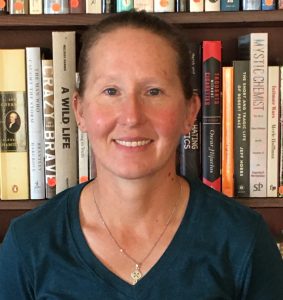
Kate Zeigler is a geologist/hydrologist who works with farmers and ranchers in New Mexico and Colorado to provide scientific data about their wells and water table. We talk about the importance of not only data collection but also building trust and community decision-making for future sustainability on arid agricultural lands.
0’41 what kind of hydrological data do farmers and ranchers need
1’29 the age of water
1’59 how fast water does or doesn’t permeate into the water table
2’38 what happens when water doesn’t sink down into the water table
3’19 making a three dimensional picture of the geology under the ground
4’13 what is an aquifer–teaching children and adults
6’50 defining water table
8’10 New Mexico water tables in agricultural areas
9’38 how long it takes northeastern NM aquifers to replenish
10’22 the gap between what wells draw up and how fast water percolates back down
11’25 center pivot irrigation
12’07 the different crops grown in the area
13’13 a lot of the crops are grown directly for cattle
13’56 is that sustainable or not
14’22 small scale feedlots in NM
15’17 seeing changes in management, including water
15’55 relationship with owners in collecting data and making decisions based on that data
18’07 do neighbors talk to each other?
18’30 neighbors who decided as a community on water management strategies
20’05 the importance of working together on local water policy
20’29 the importance of having good information
20’55 farmers figuring out what is and isn’t sustainable
21’40 no longer providing water for wildlife
22’11 advantage of moving catlle into new pastures
23’07 making the decisions in the context of markets and lenders
23’59 an example of a farmer who wants to do dryland farming but the land payments are based on irrigation
26’52 learning agriculture as a geologist
28’35 the crucial importance of building trust
29’48 the long term nature of these projects
30’20 how the work is funded
31’43 resistance to change
33’10 planning for the future even if the news is not good
35’01 what kinds of innovations people are doing
36’50 the effectiveness–and cost-effectiveness of low-tech solutions
37’17 communication and story-telling–sharing with others what did and didn’t work
38’31 is crisis stimulating more communication?
39’59 working in southern Colorado
41’22 communications vectors in isolated areas are a lot better than you might think
42’23 their role as a “rolling library”
42’56 the importance of site-specific knowledge
Land photo by Braden Collum on Unsplash



Subscribe:
Apple Podcasts
Spotify